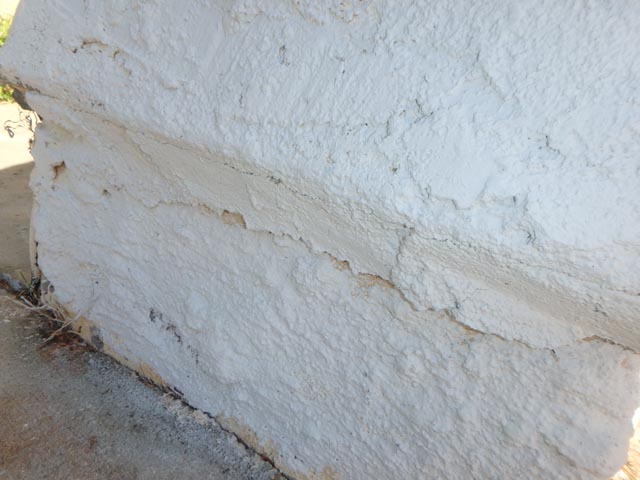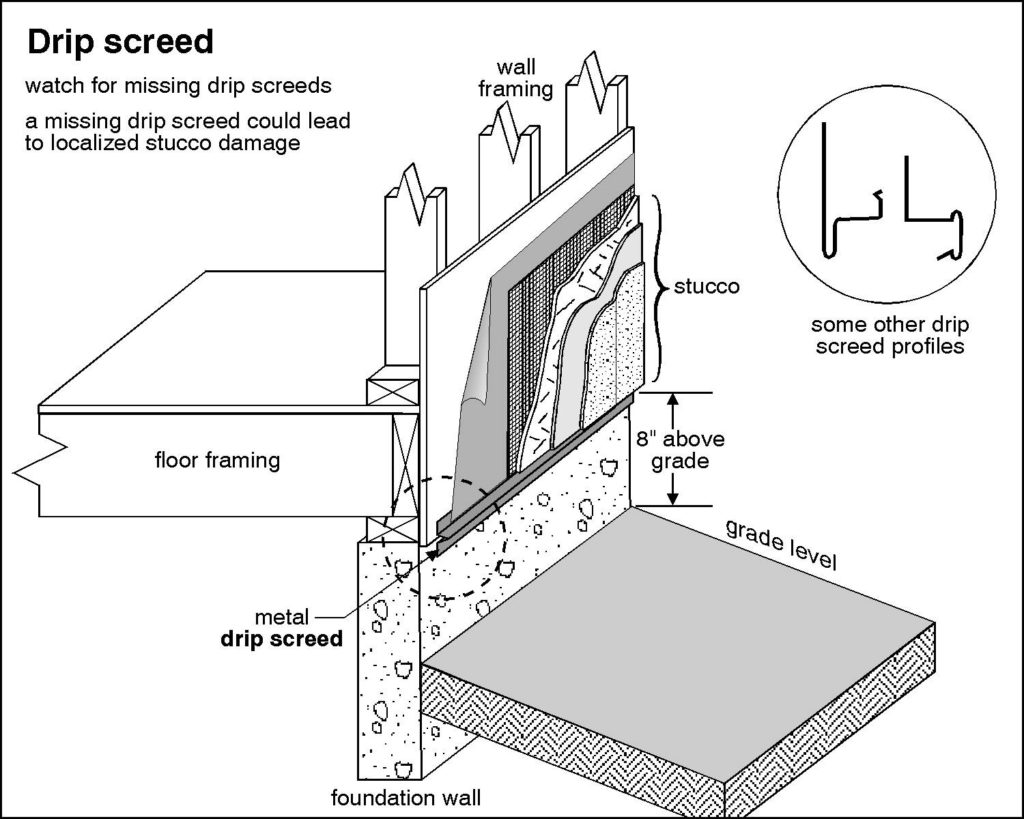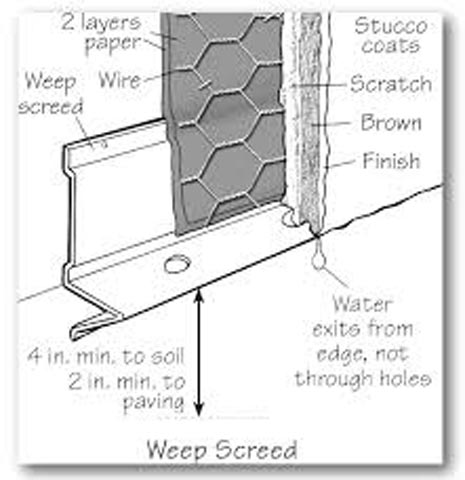Stucco Wall Penetration and Weep Screed Leak Detection Test
Many times, as homeowners, the level or slope of the ground outside your home is almost never a concern. That is until it actually becomes a concern. While many homeowners think that stucco walls are impermeable, they are not. In fact, stucco wall systems perform quite the opposite. Water will actually absorb into the stucco wall and drain to the bottom, exiting from the weep screed flashing. Now, if that flashing is covered by stucco or dirt, then water may not have an opportunity to drain correctly. Leading to water intrusion into the building. Which brings us to the Stucco Wall Penetration and Weep Screed Leak Detection Test.
Despite the fact that builders must leave a natural grade differential or slope away from a building, it almost never lasts. Rather than describe the list of possible conditions that lead to negative grade, I’ll just describe the single most popular. Planters against the building are in my opinion the biggest contributor to water intrusion into a house through the negative grade of the weep screed flashing. Let’s be honest… as much as folks love to plant things or build things around their house, by doing this you will more than likely change the landscape of your yard.
Now, it’s not that making your yard aesthetically pleasing is a bad thing, it just has to be done correctly.
Soil or cement above the weep screed
The current copy of the California Residential Building Code section “R703.7.2.1 Weep screeds. A minimum 0.019-inch (0.5 mm) (No. 26 galvanized sheet gage), corrosion-resistant weep screed or plastic weep screed, with a minimum vertical attachment flange of 3 1/2 inches (89 mm) shall be provided at or below the foundation plate line on exterior stud walls in accordance with ASTM C926.
The weep screed shall be placed not less than 4 inches (102 mm) above the earth or 2 inches (51 mm) above paved areas and shall be of a type that will allow trapped water to drain to the exterior of the building. The weather-resistant barrier shall lap the attachment flange. The exterior lath shall cover and terminate on the attachment flange of the weep screed.”

Weep screed blocked by stucco from the builder
Overall, you can see by this building code that the weep screed allows the drainage of the stucco wall system. Ordinarily, you might never know this component exists or even that a stucco wall actually drains. Nevertheless, it does.
By blocking the weep screed by ground soil, concrete surfaces or even stucco left behind by the builder, it opens the door to possible catastrophic damage to the interior of the building. Building framing and even structural damage.
What if the soil or cement is above the weep screed?

Stucco Wall system and grade clearances
As a water intrusion specialist and testing agency here in Los Angeles, we see this condition frequently. As a matter of fact, we see this condition in almost every house we visit. It’s just that common. For one thing, not all buildings leak from this condition. Immediately. However, over time, that may very well change.
For instance, take a look at this project. Because the soil was above the weep screed for many years, and the soil slope of the building did not slope away but rather, sloped towards the building; this condition happened. Buildings are just not allowed to leak.
It even says this in the building code. “R703.1 General. Exterior walls shall provide the building with a weather-resistant exterior wall envelope.”
Of course, when the soil or cement is above the weep screed flashing, it doesn’t allow water to drain out. At the same time water is building up behind the weep screed flashing, it is potentially entering into the building at the bottom plate framing.

Weep screed detail
This is where a Stucco Wall Penetration and Weep Screed Leak Detection Test is useful. Take a look at the images on this page. Amazingly, the wood is actually missing from rot. Rot caused by water intrusion caused by soil above the weep screed and grade slope towards the building wall.
Solid around a building must slope away
Building codes all require that the soil is sloped away from a building. Furthermore, it also ays that hard surfaces such as cement must alow slope away from a building. Many times we see the opposite of this condition. As is the case with this subject here. The soil slopes towards a building as opposed to what the mandate actually requires.
Why? For starters, the soil when slopes towards a building increases the likelihood that water may actually make its way into or under a building. The stucco wall penetration and weep screed leak detection test will help is detecting where water enters into a building. When such conditions exist.
California Residential Code R300.2 Grading and Paving.
Construction plans shall indicate how the site grading or drainage system will manage all surface water flows to keep water from entering buildings in accordance with the California Green Building Standards Code, Chapter 4, Division 4.1.
California Building Code 1804.4 Site Grading
The ground immediately adjacent to the foundation shall be sloped away from the building at a slope of not less than one unit vertical in 20 units horizontal (5-percent slope) for a minimum distance of 10 feet (3048 mm) measured perpendicular to the face of the wall.
If physical obstructions or lot lines prohibit 10 feet (3048 mm) of horizontal distance, a 5-percent slope shall be provided to an approved alternative method of diverting water away from the foundation.
Swales used for this purpose shall be sloped not less than 2 percent where located within 10 feet (3048 mm) of the building foundation. Impervious surfaces within 10 feet (3048 mm) of the building foundation shall be sloped not less than 2 percent away from the building.
